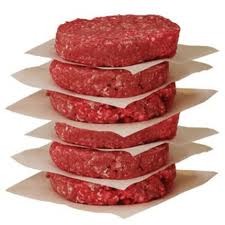 Prices for domestic 90CL manufacturing beef in the US have hit all-time record highs recently, but the risk is that the current spike in prices may negatively impact demand heading into the northern hemisphere spring.
Prices for domestic 90CL manufacturing beef in the US have hit all-time record highs recently, but the risk is that the current spike in prices may negatively impact demand heading into the northern hemisphere spring.
Domestic 90CL boneless beef prices a week or so ago reached a record US$250/cwt on the top side, up 16 percent from year-ago levels.
That strength was not reflected so much in imported frozen 90CL manufacturing beef, where demand was described as firm last week, at prices around US204c/lb. Market participants indicated imported beef volumes traded were higher than what was seen back in late January and early February, however.
The main issue at this point is that offers from Australia continue to be somewhat limited given ongoing strong Asian demand, analysts said.
However, the expectation is that with stronger domestic prices in the US and a favourable exchange rate, Australian packers will start to offer more beef in the US market.
Indeed, recent monthly export data continues to show improvement in volumes of Australian beef into the US, compared to a year ago.
January exports reached 13,800 tonnes, almost 2000t better than this time last year, while February exports are forecast to reach about 21,700t, up about 27pc from year-ago levels.
“Some importers may continue to note that offers are light, but keep in mind that a larger portion of the imported beef supply coming into the US goes directly to end-users rather than through importers,” Steiner Consulting said it in its recent weekly imported beef market report.
One reason for the stronger tone in the imported beef market is the sharp spike in lean domestic beef trimmings. US 90CL boneless beef prices a week or so ago sat at about US$245/cwt, while the top side was pegged at a record US$250/cwt.
Steiner’s report identified several reasons for the spike in US domestic lean grinding beef pricing, and why (so far, at least), the impact on imported beef prices has been somewhat limited:
US cow slaughter
US cow slaughter numbers have declined sharply since mid-January. Combined cow and bull slaughter, based on USDA estimates, was running at 140,000 head/week in mid-January, but has since dropped below 110,000/week, about 15pc down on a year ago.
In part the decline is seasonal but it also reflects the lower cow numbers on the ground in the US, producer willingness to hold onto as many females as possible for rebuilding, and improved feed supplies compared to a year ago. Last year, US producers were forced to push cows to market even through implied profitability was good because they came into the winter with limited feed. This year, hay supplies have recovered and supplies of other feeds also are significantly lower than a year ago.
Near record fed cattle prices
US fed cattle prices are near record-high levels, with steer/heifer cash prices last week near $143/cwt. High cattle prices and limited feed supplies have pushed up overall beef prices in the US. Retailers have been scrambling to cover their needs as fed slaughter also has declined in recent weeks.
Fewer cuts destined for grinding
Spiking prices for rounds and chuck cuts have meant that fewer muscle cuts are now going into the grinder, Steiner says. Lean and extra lean ground beef continues to be in very limited supplies and this has added to the premiums paid for lean cow meat.
And because much of the rally in the price of lean beef is led by US retailers, so far the impact on imported beef demand remains somewhat limited. The concern to the upside is that once weather warms up and foodservice demand improves, patty manufacturers that run least-cost formulations using domestic and imported beef may become much more aggressive in chasing imported beef.
Weather conditions
Weather conditions have caused significant transport disruptions, limiting livestock slaughter and causing end-users that have been used to running very lean inventories to bid-up in order to get deliveries.
Seasonally, prices for domestic and imported lean beef traditionally continue to climb into March and early April. In Steiner’s view, the main concern is the impact that current high prices will have on food service promotions going into spring and summer, and retail features for Memorial Day.
“Having said that, at this point the market appears to have significantly more upside risk, and some of our latest forecasts may simply be too low,” it said.
“Food service demand has been particularly slow so far, which caused us to moderate some of the significant price increases we saw in the spring and summer.”
Other drivers expected to have a moderating impact on US lean beef prices are not trending as expected. Lower feed costs were supposed to bring more pork and chicken to market, for example. Pork supplies have declined, however, due to disease issues while chicken supply increases have moderated.
“So while retailers may look to feature other proteins, and they will do their best, their options are not as plentiful as earlier expected. The increasing value of pork trimmings, we think, is impacting the strong prices for beef trim,” Steiner said.
